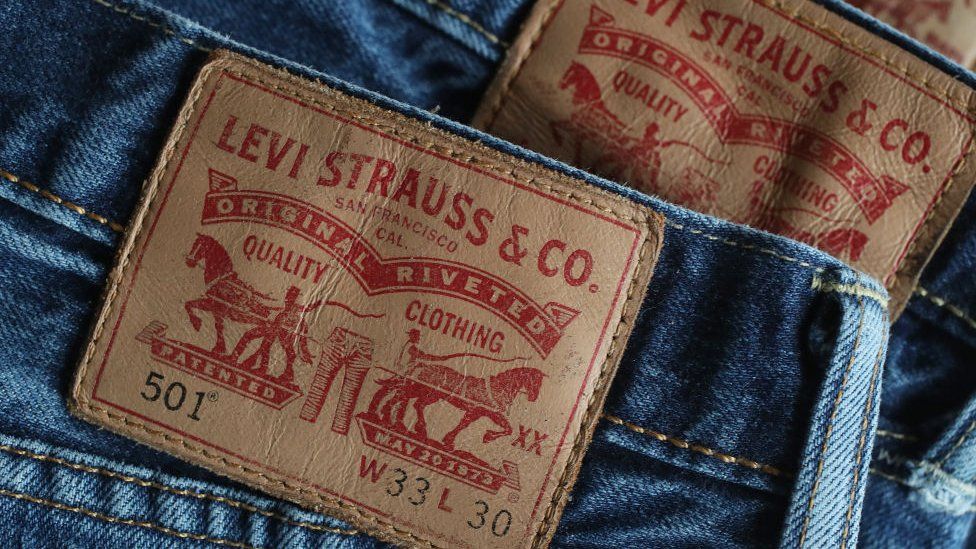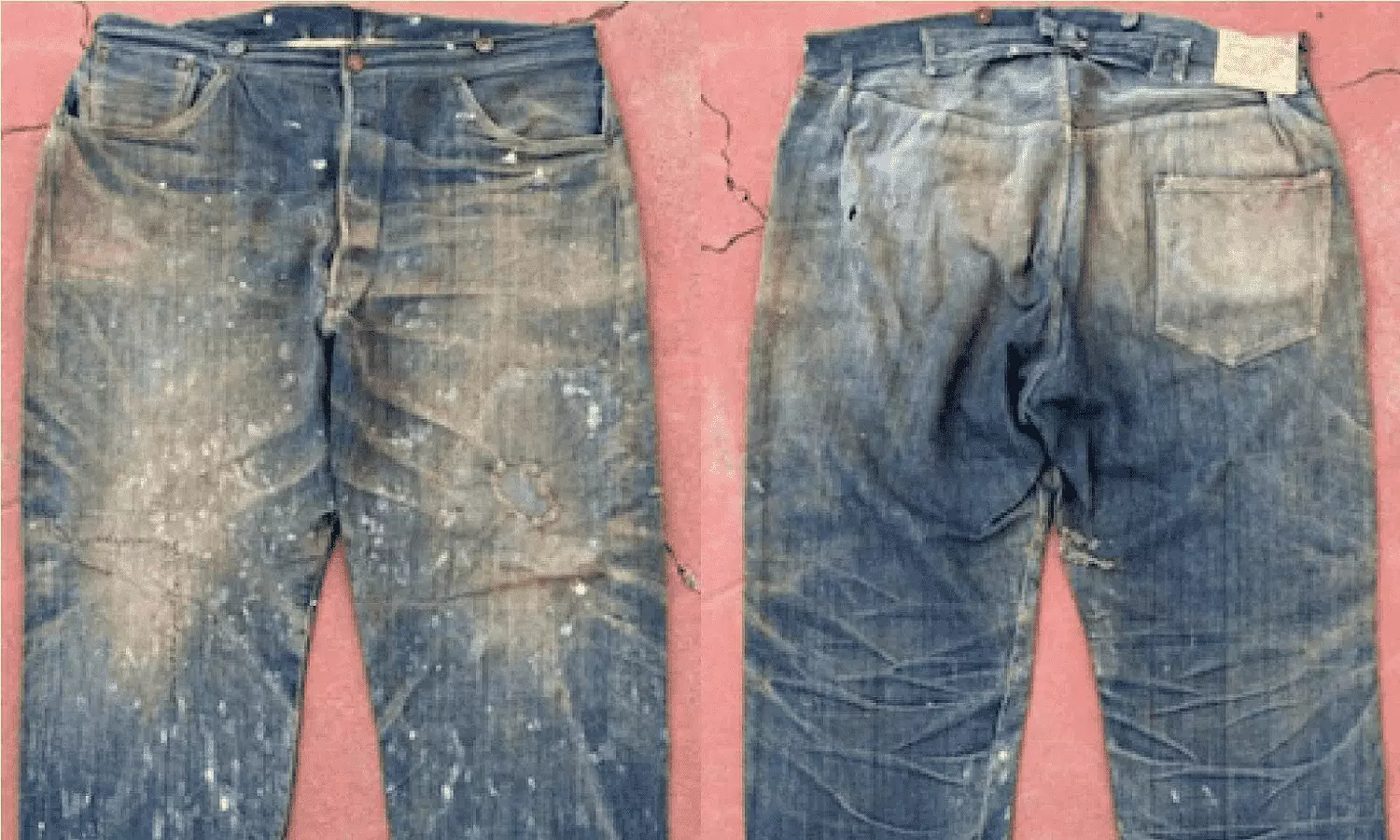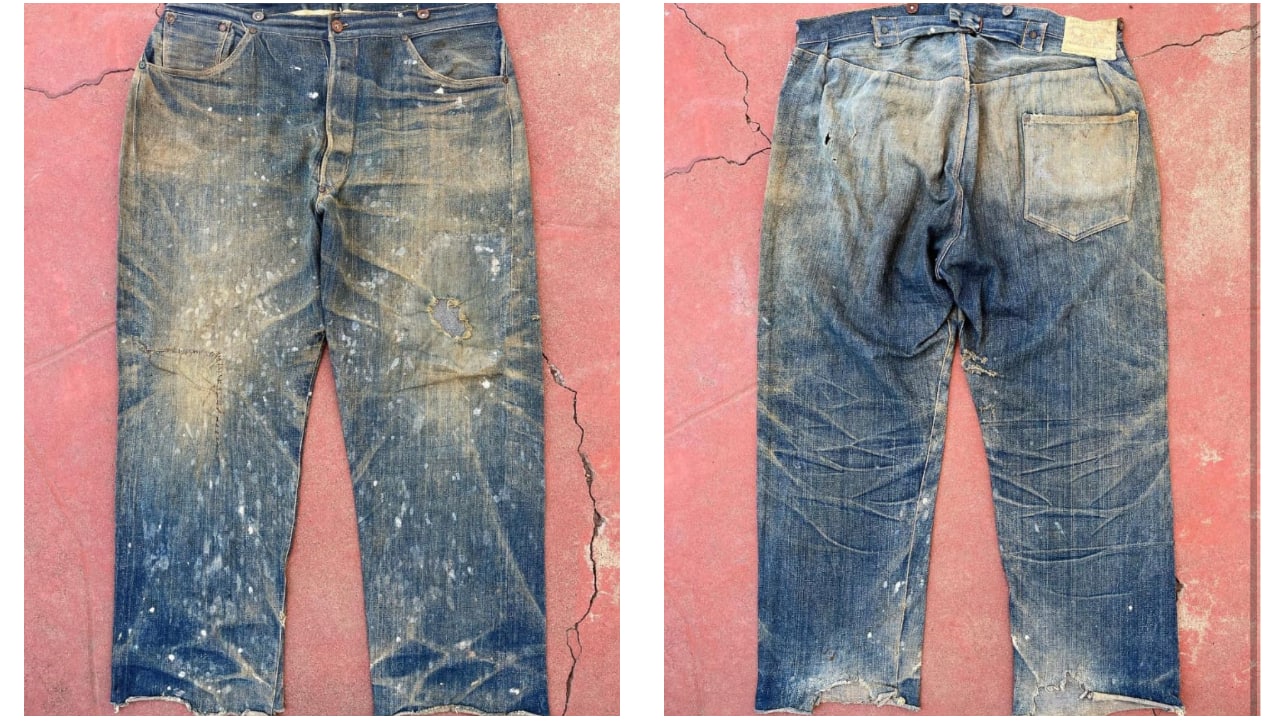Jeans are more than just a fashion statement; they’re an enduring symbol of practicality, style, and culture. Among the many denim brands we know and love today, one stands out as the trailblazer: Levi Strauss & Co. But how did it all start, and why has this brand endured for nearly 150 years?
What Is the Oldest Jeans Brand?
When discussing jeans, one name inevitably rises to the top: Levi Strauss & Co. This brand holds the title of the oldest jeans brand, having invented the first pair of riveted denim pants in 1873. But what exactly does this mean, and why is it significant? Let’s break it down.
Levi Strauss, a German immigrant, teamed up with a tailor named Jacob Davis to create workwear durable enough for miners and laborers during the California Gold Rush. Their invention, patented as “waist overalls,” became the blueprint for modern jeans.
Quick Facts About Levi Strauss & Co.
- Founded: 1853 in San Francisco, California.
- Key Invention: Riveted denim pants patented in 1873.
- Iconic Product: The 501® jeans, first introduced in 1890.
Levi’s has since evolved from practical workwear into a cultural icon. It’s the oldest jeans brand still in operation, credited with shaping not just the fashion industry but also popular culture worldwide.
Why Is Levi Strauss & Co. Considered the First Jeans Brand?
Levi Strauss & Co. is universally recognized as the first brand to create what we now call “jeans.” While denim existed before Levi’s invention, it was their patented rivet design that transformed the fabric into a staple for rugged workwear. This innovation marked the birth of the jeans industry as we know it.
Key Features of the First Pair of Jeans:
- Made of durable denim fabric.
- Reinforced with copper rivets to prevent tearing.
- Designed for miners and manual laborers.
The combination of durability, affordability, and practicality catapulted Levi Strauss & Co. to fame, laying the foundation for every other jeans brand that followed.

The Origins of Jeans
To truly understand what makes Levi Strauss & Co. the oldest jeans brand, we need to go back to the origins of jeans themselves. Where did they come from, and why were they created? The story of jeans begins with a specific need: durable clothing for hard-working individuals.
When Were Jeans Invented?
Jeans as we know them were invented in 1873, but their roots can be traced back even further. The fabric, denim, originated in Nîmes, France, in the 17th century, where it was called “serge de Nîmes” (which eventually became “denim”). Denim gained popularity for its strength and affordability, making it a go-to fabric for tough jobs.
The pivotal moment came when Jacob Davis, a tailor in Nevada, came up with the idea to reinforce pants with copper rivets at stress points, such as pocket corners and the base of the fly. Davis lacked the resources to patent his idea, so he approached his fabric supplier, Levi Strauss, for a partnership. Together, they patented riveted denim pants on May 20, 1873, and the modern jean was born.
Timeline of Key Events in the Origin of Jeans
| Year | Event |
|---|---|
| 1600s | Denim fabric created in Nîmes, France. |
| 1853 | Levi Strauss establishes his company. |
| 1871 | Jacob Davis creates riveted work pants. |
| 1873 | Levi Strauss & Co. patents riveted jeans. |
Why Were Jeans Invented?
The invention of jeans was driven by necessity. During the California Gold Rush of the mid-1800s, miners required clothing that could withstand the demands of their labor-intensive jobs. Regular fabric tore too easily, especially in high-stress areas like pockets.
Problems Jeans Solved:
- Durability: Denim fabric and rivets created pants that could endure harsh conditions.
- Affordability: Jeans were economical compared to other durable garments of the time.
- Versatility: Suitable for various types of physical labor.
Levi Strauss & Co. quickly gained a reputation for making high-quality workwear, and by the late 19th century, jeans had become a staple for laborers across America.
The Legacy of Early Jeans
The success of the first jeans sparked an industry revolution. By the early 20th century, denim workwear had expanded beyond miners and cowboys to factory workers, farmers, and eventually everyday consumers. Jeans became synonymous with reliability, setting the stage for Levi Strauss & Co. to evolve from workwear innovators into global fashion icons.

Levi Strauss & Co.: The First Jeans Brand
Levi Strauss & Co. isn’t just the oldest jeans brand—it’s the brand that redefined how the world views denim. From its humble beginnings in the 19th century to becoming a household name, Levi’s journey is as iconic as the jeans themselves.
Who Was Levi Strauss?
Levi Strauss, born Löb Strauß in 1829 in Buttenheim, Germany, emigrated to the United States in 1847. Like many immigrants of his time, he sought economic opportunities and a fresh start. Strauss initially worked in his family’s dry goods business in New York before moving to San Francisco during the California Gold Rush.
In 1853, Levi founded Levi Strauss & Co., a wholesale business supplying goods like clothing, bedding, and tools to miners. Little did he know that his company would soon revolutionize fashion.
Key Facts About Levi Strauss:
- Birth: February 26, 1829.
- Emigration: Moved to the U.S. at age 18.
- Entrepreneurial Focus: Transitioned from dry goods to pioneering workwear.
Collaboration with Jacob Davis
The story of the first jeans wouldn’t be complete without Jacob Davis, a tailor who invented the rivet reinforcement. Davis worked in Nevada, where he noticed miners frequently tearing their pants. To solve this issue, he reinforced key stress points with copper rivets.
Davis’s idea was ingenious but lacked financial backing for a patent. Enter Levi Strauss, who saw the potential in Davis’s innovation. Together, they filed a patent for riveted pants in 1873. This collaboration birthed not only the first jeans but also an enduring partnership.
Patent Milestone
- Patent No. 139,121 was granted on May 20, 1873.
- This date is now celebrated as the official birthday of blue jeans.
The First Pair of Jeans
The first jeans, marketed as “waist overalls,” were designed specifically for laborers. They were rugged, reliable, and addressed the practical needs of miners. These early jeans didn’t even have belt loops, as suspenders were more common at the time.
Features of the First Levi’s Jeans:
- Denim Fabric: Known for its durability and versatility.
- Copper Rivets: Reinforced pockets and seams.
- Button Fly: A feature that persists in iconic styles like the Levi’s 501®.
These jeans quickly became popular among working-class individuals, setting Levi Strauss & Co. apart as the leader in durable workwear.
From Workwear to Cultural Icon
Levi Strauss & Co. didn’t stop at creating workwear. By the early 20th century, the brand was expanding its reach. In 1890, Levi’s introduced the 501® jeans, which remain one of the most iconic styles in fashion history. These jeans became a blank canvas for generations of wearers, adapting to changing trends while retaining their timeless appeal.
Key Moments in Levi’s History:
- 1930s: Cowboys and ranchers popularized Levi’s jeans in Western films.
- 1950s: The rise of youth culture and rock ‘n’ roll made Levi’s a symbol of rebellion.
- 1960s-70s: Counterculture movements adopted Levi’s as a statement of individuality and freedom.
- 1980s: Designer collaborations and marketing campaigns cemented Levi’s as a global fashion brand.
The Impact of Levi Strauss & Co.
Levi Strauss & Co. didn’t just create jeans—they created a cultural phenomenon. Their innovation and adaptability have kept them relevant for over a century, making them a testament to the power of quality and vision. From the mines of California to runways and city streets worldwide, Levi’s has proven that the oldest jeans brand is also one of the most enduring.

Why Is Levi Strauss & Co. Still Relevant Today?
Levi Strauss & Co. isn’t just the oldest jeans brand; it’s also one of the most enduring and culturally significant. What has kept Levi’s relevant for nearly 150 years? The answer lies in a combination of innovation, cultural resonance, and an ability to adapt to changing consumer values.
Innovations Over the Years
Levi Strauss & Co. has consistently pushed the boundaries of denim design and manufacturing. From creating the first riveted jeans to launching iconic styles like the 501®, the brand has been at the forefront of innovation.
Notable Innovations by Levi Strauss & Co.:
- 501® Jeans (1890): The first blue jeans with a lot number, featuring a button fly and a straight fit. These became a benchmark for denim globally.
- Stonewashed Denim (1980s): Levi’s pioneered the distressed look, making jeans more appealing to fashion-forward consumers.
- Stretch Denim: Incorporating elasticity for comfort and mobility, appealing to modern lifestyles.
- Water<Less® Technology: Introduced in 2011, this process reduces water use during production, showcasing Levi’s commitment to sustainability.
These innovations have allowed Levi’s to maintain its appeal across generations and demographics, from manual laborers to fashion enthusiasts.
Cultural Impact
Few brands can claim the kind of cultural significance that Levi Strauss & Co. has achieved. Levi’s jeans have transcended their origins as workwear to become a symbol of freedom, individuality, and rebellion.
Key Cultural Milestones:
- 1930s: Hollywood Westerns featuring cowboys like John Wayne brought Levi’s jeans to mainstream audiences.
- 1950s: Stars like James Dean and Marlon Brando wore Levi’s jeans in films, turning them into a symbol of youthful rebellion.
- 1960s-70s: Hippies, civil rights activists, and anti-war protesters embraced Levi’s as a statement of counterculture.
- 1990s: Levi’s baggy fits became synonymous with hip-hop culture, showcasing the brand’s versatility.
Levi’s has been worn by everyone from ranchers to rock stars, making it one of the few brands that can claim true universality.
Sustainability Initiatives
In an era where consumers are increasingly concerned about the environmental impact of their purchases, Levi Strauss & Co. has taken significant steps to lead in sustainability. This commitment has not only reinforced the brand’s relevance but also attracted environmentally conscious customers.
Levi’s Sustainability Highlights:
- Water<Less® Technology: Since its introduction, Levi’s has saved over 3 billion liters of water.
- Use of Recycled Materials: Levi’s incorporates post-consumer waste, such as recycled cotton and plastic bottles, into its jeans.
- SecondHand Program: Encouraging customers to buy pre-owned Levi’s products to reduce waste.
- Commitment to Circular Fashion: Levi’s jeans are designed to last, with repair and recycling initiatives to extend their lifespan.
These initiatives align Levi’s with the values of today’s consumers, particularly millennials and Gen Z, who prioritize ethical and sustainable fashion.
Why Levi’s Stands Out Among Competitors
While many other denim brands have emerged since Levi’s, few have achieved the same level of cultural resonance or longevity. Levi Strauss & Co. stands out due to its combination of quality, heritage, and forward-thinking innovation.
Comparison of Levi’s with Other Jeans Brands
| Brand | Founded | Key Differentiator |
|---|---|---|
| Levi Strauss & Co. | 1853 | The oldest and the original creator of riveted jeans. |
| Lee | 1889 | Focus on workwear with innovations like the zipper fly. |
| Wrangler | 1947 | Strong ties to cowboy and rodeo culture. |
While other brands have carved out niches, Levi’s remains the benchmark for classic denim, blending heritage with modern sensibilities.
The Secret to Levi’s Longevity
The secret to Levi Strauss & Co.’s longevity lies in its ability to stay true to its roots while embracing change. By continuing to innovate, engage with culture, and prioritize sustainability, Levi’s has cemented its place not just as the oldest jeans brand but also as a brand for the future.
Originally posted 2024-11-20 20:58:34.